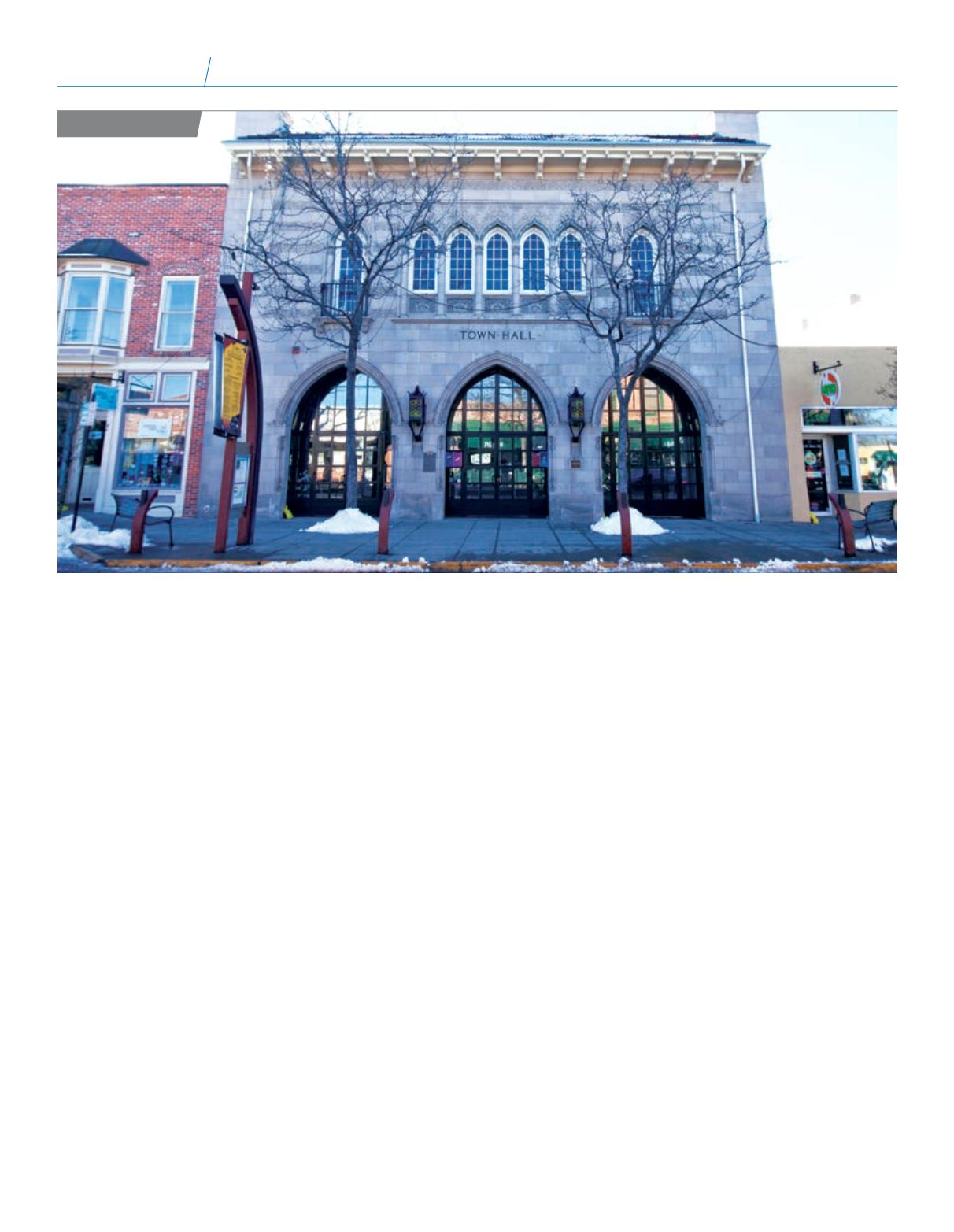

100
/ BUILDING DIALOGUE / JUNE 2015
T
he historic Littleton Town Hall stands in the middle of
Littleton’s four-block Main Street and provides the focal
point of its downtown area. A bond issue was approved
in April 1919 to fund the project at 2450 W. Main St. It replaced
the town hall purchased by the city in 1898 on the same site.
In 1902, the city added a brick extension to bring the building
up to the front sidewalk and rented the new space to county
officials. The public library also was housed in rooms in the
front of the brick addition.
The building now at 2450W. Main St. was constructed in 1920
and served as the seat of local government and as a commu-
nity gathering place from then until 1977, when the Littleton
Center was built at 2255 W. Berry Ave.
Jules Jacques Benois Benedict was the chosen architect. He
had designed the city’s Carnegie Public Library in 1916. The
flamboyant Benedict was by then one of the foremost archi-
tects of the West. He was renowned for his period architecture
and fine attention to detail. He had been greatly influenced
by this education at the Beaux-Arts School of Architecture in
Paris. Town Hall is an Italian Renaissance revival design, pop-
ular during the early 20th century. The building is clad in ar-
chitectural terra cotta with two types being utilized, a smooth
face to resemble stone and one with a rougher face. Projecting
piers from the building support a decorative tile hipped roof.
The primary roof is flat and invisible from the street. The tri-
ple-arched arcade is the dominant feature of the facade and
gives the building its Italian Renaissance feel. Originally the
doors were set back into the building, leaving the arcade open.
However, the pointed style of the arch is actually more repre-
sentative of the Gothic Revival, also popular during this period
in history. It was common practice of architects to combine
attributes of different styles of architecture to achieve the de-
sired esthetic effect.
Benedict was considered a highly practical architect andwas
aware of the constraints upon the city’s budget. He obtained
the terra cotta at cost from the Denver Terra Cotta Co., which
also sent men to oversee its installation free of charge. The
exterior cast iron lamps were made and donated by Benedict
himself. The originals still hang on the building today.
When completed, the building was described as the finest
architectural example in the country of a town hall for a small
community.
The original hall was designed for a town of 1,600. Major re-
models in the 1950s and 1960s partitionedbothfloors forneeded
office space. The arcade on the ground floor was enclosed with
stucco and glass. In 1972 the city recognized the building as one
of the community’s most significant structures and designated
it an historic landmark. In 1980 it was included on the National
Register of Historic Places. By 1983 it was under long-term lease
by the nonprofit Littleton Center for the Cultural Arts, which
restored the exterior of the building and once again opened
up the interior spaces. The first floor became a general entry
and receiving room, offices and work space. Vintage marble
from the Daniels and Fisher building in downtown Denver
was used to border new burgundy carpeting. The arcade was
reopened and fitted with glass doors to provide a direct view
into the lobby with its handsome staircases. The second floor,
originally designed as a gathering place formeetings and com-
munity events, was restored to that use as contemporary the-
ater space. The building became known as the Town Hall Arts
Center with an active schedule of a variety of events.
Renovation of the theater area in 1997 reconfigured the seat-
ing from a three-quarter round into a more proscenium ar-
rangement. The cast iron and wood seats, which came from
an old theater in Montana for the remodeling in 1983, were
refinished and reupholstered. Aisle lighting and a new stage
floor were also installed.
Source: www.litteltongov.org. \\Landmarks
Littleton Town Hall















